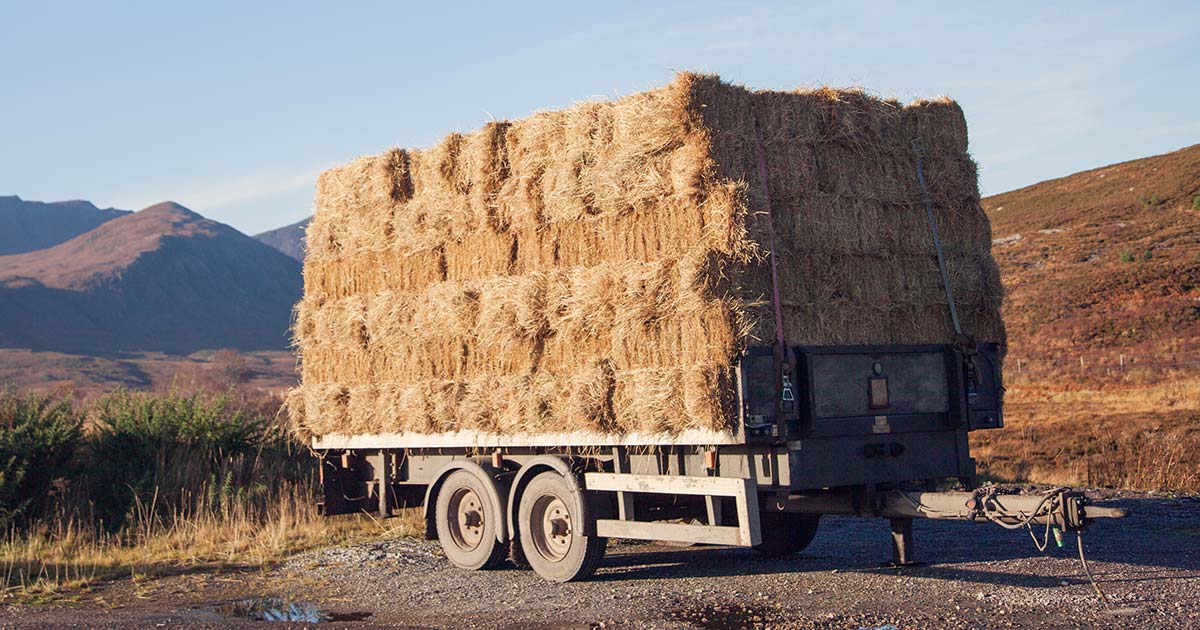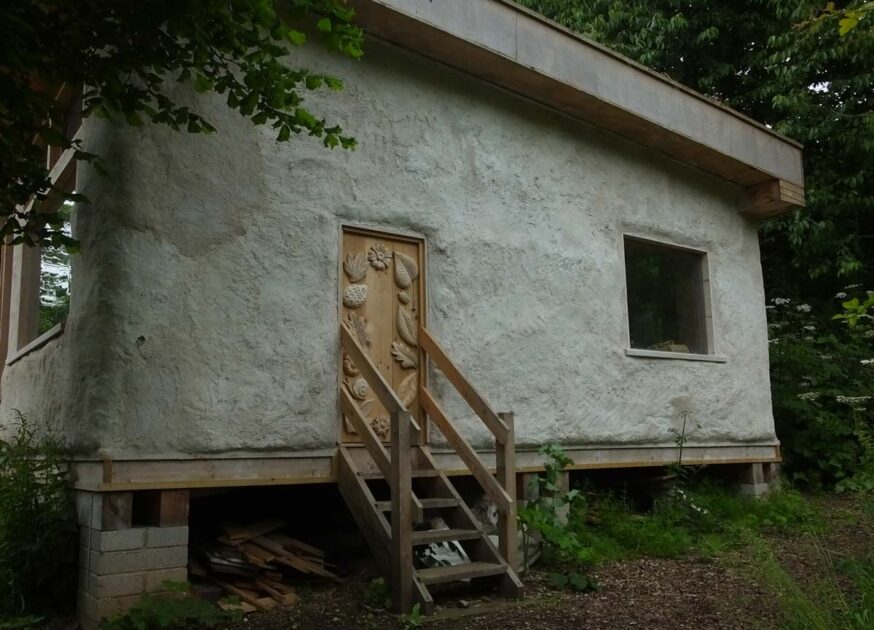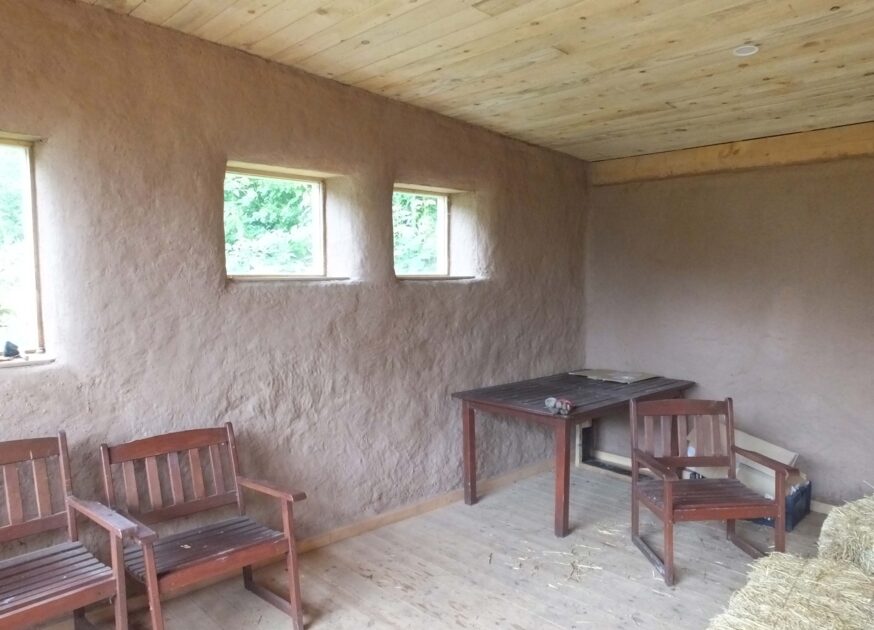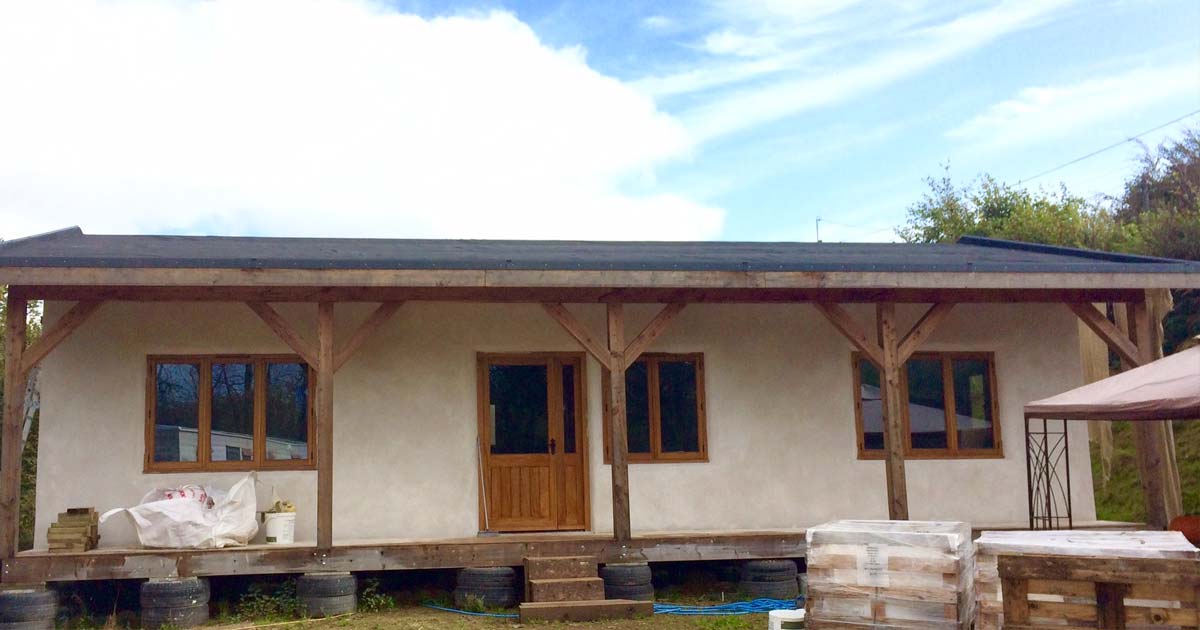
Strawbale homes have been around for centuries and are still gaining popularity today. They are eco-friendly, energy-efficient, and often indistinguishable from regular homes once built. Strawbale homes use natural materials to create a structure that is both comfortable and sustainable
What exactly is a Straw Bale Home?
A Straw Bale home is exactly what it sounds like; it’s a home constructed with Straw Bales. Straw bales are made from the remains of plants such as wheat, barley, and oat after the grain is harvested. They are lightweight, inexpensive, and naturally renewable. When used for construction, they provide excellent insulation and soundproofing.
Strawbale homes are sturdy and can be designed in any shape or size as long as the walls are built to support the structure. The bales of straw are stacked up to form the walls, which are then covered with a plaster or stucco layer for protection. The roof and foundation can be made of any material, though concrete and wood are the most popular choices.
There are two Types of Straw Bale Homes:
- Load-Bearing: Known as the Nebraska Style, the first type is one where the homes structural supports are built using straw bales. In this method there are no traditional beams; the bales literally create the load bearing walls, and are responsible for much of what would be accomplished with traditional framing methods.
- Post-and-beam infill: The second type of home uses the bales strictly for insulation. These homes use traditional framing to build the home, and the walls are filled with straw bale as an insulation. These are usually easier to get approved in areas with strict zoning codes.
Why would someone use Straw as a building material?
There are several benefits to building a strawbale home, including:
Sustainability
Over 200 million tons of straw go unused annually in the United States. For this reason, straw has become a popular eco-friendly, cost-effective building material.
Straw is a renewable resource that can be grown yearly without depleting the soil. It’s also biodegradable, which means it doesn’t harm the environment when it eventually breaks down. Also, strawbale homes use fewer new materials than most conventional homes, reducing their environmental impact.
Energy Efficiency
Building with straw bales is about three times as efficient as conventional framing and its insulation properties can reduce energy costs by up to 75%.
The thick, insulating walls of a strawbale home provide excellent thermal insulation. This means that the home stays warm in winter and cool in summer, reducing the need for heating, ventilation, and air conditioning (HVAC) systems. In addition, compared to conventional homes, strawbale homes require lower energy consumption, which makes them more sustainable and saves on utility bills.
Durability
Strawbale homes are sturdy and strong. When properly built, they can last for centuries. Also, strawbales have a high fire resistance rating, making them safer than conventional homes made from wood.
Aesthetics
Strawbale homes have a unique and natural look that many homeowners find attractive. They have a cozy and warm feeling that is hard to replicate with conventional building materials. In addition, Strawbale walls have a soft texture that is pleasing to the touch, and the plaster or stucco layer can be customized with different colors, textures, and designs.
Health Benefits
Strawbale homes are often built with natural, non-toxic materials, meaning fewer chemicals and volatile organic compounds (VOCs) are in the air. This creates a healthy living environment for people with allergies or other chemical sensitivities.
Building with bales of straw has become very popular and can be seen in many areas of the Southwestern United States. Straw is a renewable building material and is a great insulator from the elements.
How to Build a Strawbale Home
Building a strawbale home requires extensive planning and preparation. Here are the basic steps involved in building a strawbale home:
Design the House
Before breaking ground on a strawbale home, you need to design it. This involves working with an architect or designer to create a floor plan that meets your needs and budget. There are many different factors to consider, such as the number of bedrooms, bathrooms, and living spaces, as well as the orientation of the house on the lot.
Choose the Right Location
Next, you need to choose the right location for your strawbale home. Look for a site that is level, free from flooding and erosion, and has good access to utilities such as water, sewer, and electricity. In addition, a south-facing slope can help optimize solar gain, which is important for heating and cooling the home.
Build the Foundation
The foundation of a strawbale home can be made of any material, but the most common choices are concrete, stone, or rubble trench. A good foundation is essential to support the weight of the walls and roof. Once the foundation is in place, the walls can be built on top.
Install the Roof
The roof of a strawbale home can be made of any material, but metal, shingles, or tile are the most popular choices. The roof should be designed to accommodate the weight of the straw bale walls, which are heavier than conventional walls.
Prepare the Straw Bales
Before stacking the straw bales, they need to be prepared. This involves compressing them to remove any gaps or inconsistencies. This can be done using a bale press or by hand.
Stack the Walls
Once the straw bales are prepared, they can be stacked on top of the foundation. The walls should be erected in sections and pinned in place using long wooden pegs or metal rebar. The walls can then be tied together using twine or wire mesh.
Examples of Straw Bale Homes




Strawbale Resources:



What about rot or fungi doesnt the straw deterirate and need to be replaced?
Only if it gets wet, as with nearly any non-concrete building material (wood, dry-wall, etc.) But if you keep the straw dry during construction the building can last for centuries.
The bales also make a natural fire retardant, as opposed to traditional building materials and methods. Because the straw is packed to tightly the oxygen necessary for fire can’t get in and it smolders and goes out. Ever try and burn a full phonebook in a fireplace? ;)
I’m assuming this wouldn’t be a good choice for the Pacific Northwest?
depends. i live out in Spokompton and we have fairly dry weather during the summer and occassionally mild winters. it really doesn’t rain here as much as it does in Seattle or Tacoma. I would think that as long as the straw itself doesnt get wet/damp during construction you should be fine – by the time it’s all sealed with clay/lime it should be fairly waterproof.
I like these houses but I am building a tiny house on wheels. It is good to be able to move the house when needed. It doesn´t need a lot of energy, you can make it your self.
Wow, some of those look more like “real” houses. I think they would be warm.
Strawbale houses are perfect everywhere. Once the walls are sealed no moisture gets in. There is one in downtown Seattle.The roof needs to extend 3 or 4 feet out from the walls. Do some research the houses are amazing.
I’ve seen them built badly in Florida. 80% humidity, I’m guessing, isn’t great for them.
My “neighbor” down the road built a straw bail home. His heating/cooling cost are incredibly low. He treated his bails with a fungicide and a fire retarding chemical as well. A very very nice home. Considering doing this on our property up in the mountains!!!!!!
Does anyone know what fungicide and fire retardant you would use to spray on this type home? Also – what about insuring them? Thanks!
i watched a show on cob house building which is a mixture of clay ,sand and straw and it showed a building that had been built in the 1700’s that are still standing and they said the key is that they have good shoes and a good hat meaning a good foundation and roof this building was over in england
There was a company in Manitoba Canada that was actually making construction material out of straw. Guess what happened?? Government shut them down sating that the material were hazardous and would internally com bust. Believable? No. The problem was it was extremely inexpensive to buy and heat/cool them home.
Now there are acres of rotting bales close to the city.
I live near the old straw board plant. They were not shut down by anyone. There were problems with their manufacturing process and they went bankrupt despite the government contributing millions to get them up and running.
They do not need fire retardant they can not get oxygen to burn since they are coated with a concrete or clay material. Also has anyone ever This is for those that fear the construction. But to be honest there have been alot of test done for structure stability and fire and etc. It shows that is not a problem if they are biult properly.